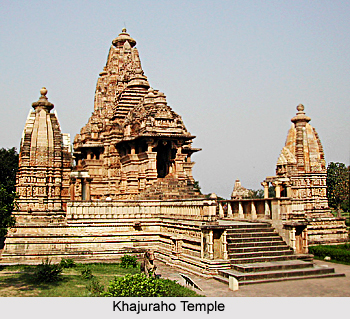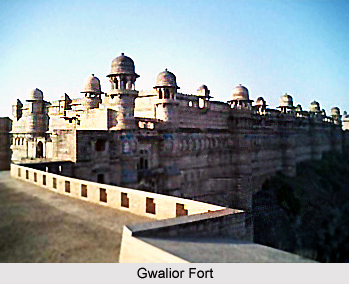 Downfall of Pratihara Empire took place during the reign of Mahipala. During the reign of Devpala and Vijaypala, his successor, the Pratiharas had their hold over upper Gangetic Valley, Malwa, and some parts of Rajputana. Gradually Chandellas became independent. Finally a number of succession states grew leading to downfall of Pratihara Empire. Independent Kingdoms of Chalukyas in Gujarat, Chandelas of the Yamuna and Narmada Valley, Kachchhaghata in Gwalior, Guhilots in South Rajputana, Chedis of Dahala, Chahamanas of Sakambari, the Kalachuris in Central India and the Paramaras in Malwa, grew on the wreckage of Pratihara Empire. The Pratihara Empire had vanished by that time.
Downfall of Pratihara Empire took place during the reign of Mahipala. During the reign of Devpala and Vijaypala, his successor, the Pratiharas had their hold over upper Gangetic Valley, Malwa, and some parts of Rajputana. Gradually Chandellas became independent. Finally a number of succession states grew leading to downfall of Pratihara Empire. Independent Kingdoms of Chalukyas in Gujarat, Chandelas of the Yamuna and Narmada Valley, Kachchhaghata in Gwalior, Guhilots in South Rajputana, Chedis of Dahala, Chahamanas of Sakambari, the Kalachuris in Central India and the Paramaras in Malwa, grew on the wreckage of Pratihara Empire. The Pratihara Empire had vanished by that time.
During the reign of Rajyapala, the Turks had invaded India. Attack from the North west was met by the Brahmanashahi kingdom on the Afghanistan borders. Rajyapala supported the Brahamanashahi ruler Jaipala against Sabuktagin his son Anandapala also against Sultan Mahmud of Ghazni. Mahmud succeeded in destroying the Brahmanashahi kingdom and Rajyapala had fled. Feeling embarrassed at this uncourageous behaviour of Rajyapala the Chandella chief Gauda supported by other chiefs killed him and placed Trilochanapala, son of Rajyapala. He was ruling the throne of Kannauj. Trilochanapala was defeated by Sultan Mahmud. His heir and the last ruler of Pratihara dynasty was Yasapala. The mighty Pratihara Empire ended in this manner.
 It cannot be denied that the Pratihara Kings like Vatsaraja, Mihirbhoj, and Nagabhatta brought glory to this clan by creating a far reaching empire in Northern India facing all enemies. The other achievement of the Pratiharas was checking Arab penetration in India. The Arab traveller Sulaiman had described Mihirbhoj as the greatest enemy of Islam. They kept Arabs confined to Sindh. Till the end almost all the Pratihara Kings ensured that no Muslim invaders should infiltrate to India.
It cannot be denied that the Pratihara Kings like Vatsaraja, Mihirbhoj, and Nagabhatta brought glory to this clan by creating a far reaching empire in Northern India facing all enemies. The other achievement of the Pratiharas was checking Arab penetration in India. The Arab traveller Sulaiman had described Mihirbhoj as the greatest enemy of Islam. They kept Arabs confined to Sindh. Till the end almost all the Pratihara Kings ensured that no Muslim invaders should infiltrate to India.
The Pratiharas sustained the dignity of a great empire in North India for about a century and fulfilled their duty to fight against foreign attackers. The empire of the Pratiharas proved more resilient as compared to the Palas and the Rashtrakutas. After the fall of the empire of King Harsha, Pratiharas played an important role in unification of Northern India.
There was no dearth of genius during the reign of Pratiharas. They were considerate towards the welfare of their subjects. The Pratihara Kings were patrons of art and letters. Rajashekhara, the well known Sanskrit writer was renowned in the court of Bhoja I and Mahendrapala, his son. The decline in the power and authority of Pratiharas was due to the assault of Rashtrakutas, revolt of Vassal chiefs, and undoubtedly foray of Muslims. Towards the end of tenth century, the prestige of the Pratiharas came to and end.



















